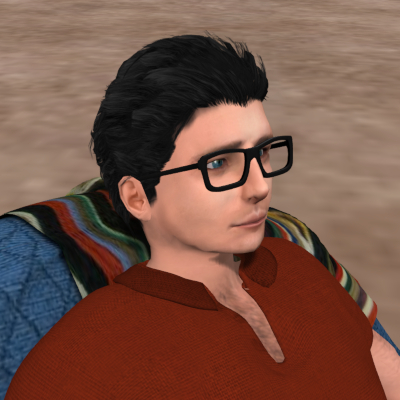OpenSim infos and FAQs
What is OpenSim?
Short version: OpenSim is to Second Life what Lemmy is to Reddit and Mastodon is to Mastodon, only that the UI is actually pretty much the same, and the UX is very close.
Long version: OpenSim, short for OpenSimulator, is a free and open-source server application for 3-D virtual worlds very similar to Second Life. (Yes, Second Life still exists. And it’s still evolving after two decades.) OpenSim was built around the Second Life viewer API. It first came out in 2007.
It is not, strictly speaking, a VR system, and it’d be hard to port to VR. The underlying technology and the highly complex avatars and objects don’t allow for guaranteed constant 60fps on VR headset hardware. That’s why OpenSim is a “pancake” world to be used on desktop or laptop computers first and foremost.
Like the one in Second Life, OpenSim worlds are called “grids”. That’s because they’re divided into square fields, so-called “regions”, of 256x256m. While Second Life has only got one grid, almost all public OpenSim grids are interconnected by something called the Hypergrid. It enables avatars from one grid to visit other grids, looks, settings, inventory and all. So while there are many grids, you aren’t necessarily stuck on yours.
By the way, the term “Metaverse” has been used regularly by the OpenSim community since at least as early as 2010, including in official grid names.
Based on Second Life? Is that even legal?
Yes, it is.
In 2006, Linden Labs put the official Second Life viewer (a viewer is an application used to access these worlds) under a free license and made it open-source. Thus, the Second Life Viewer API was publicly accessible.
The first thing that happened was that third-party viewers for Second Life itself were developed.
The next thing was that something was developed on the other end of the API standard, namely a virtual world system that was compatible with these third-party viewers. Its working title was OpenSecondLife, but it was clear that it could never be published under that name. So when it came out in January 2007, it was named OpenSimulator.
Still today, OpenSim relies on third-party viewers.
Who’s behind all this?
OpenSim is so decentralised that nobody is behind all this.
There are a very few core developers led by Ubit Umarov. But all they do is maintain OpenSim (the server application) itself. They neither develop a viewer, nor do they run a grid. A lot of code comes in from developers in two major grids who are independently owned.
One of them is the “flagship grid” OSgrid, the first OpenSim grid, launched in 2007, thus the oldest grid and also the largest one and the one with the most users. At the same time, it’s still the same experimental grid as which it was started. And still, it isn’t “official”, it’s independent from the core devs. The same applies to all other grids, big and small. Anyone can run their own grid.
As I’ve already mentioned, there isn’t an official viewer either. OpenSim relies on third-party Second Life viewers which are available in OpenSim-specific variants. No OpenSim-only viewer endeavour has ever come to long-term fruition.
Is it expensive?
Nope.
Just like Second Life, OpenSim itself is free-of-charge.
In comparison with Second Life, there’s much less you’ll have to pay for. Usually, it’s limited to land, for most grids are non-commercial and don’t even offer any kind of in-world payment.
And even land is much cheaper than in Second Life where a standard region of 256x256m costs at least $250 a month. This is already cheap in comparison with more recent virtual worlds where you have to spend ridiculous amounts of money to buy much less land. Well, many grids that offer land rentals charge $10 for the same amount of land, and you can even build more on it. This is possible because land rentals only have to cover server costs in OpenSim.
Uploads cost nothing. That’s why some Second Life users run their own private OpenSim grids where they can test-build their creations, so that they’ll only have to upload the finalised products to Second Life instead of lots of WIPs.
Then I guess OpenSim must be tiny?
Nope again.
Second Life has some 55,000 monthly users. OpenSim is said to have around 45,000, although exact numbers are hard to get due to OpenSim being so decentralised. Granted, both are nothing in comparison with Roblox.
Still, OpenSim is a case of Empty World Syndrome. That’s because land is so cheap and easy to get. Again, how many active grids there are isn’t known exactly, but there are over 400 public grids alone, most of which are open to the Hypergrid. Each grid theoretically has much more space for land than the Second Life grid. OSgrid alone has almost got the same land area as Second Life, and before one of the last clean-ups, it was even bigger than Second Life. All known public grids put together have a land area that’s more than four times that of Second Life.
Okay, I’m sold. Where can I download OpenSim, and how do I get started?
Whoa, whoa, slow down. If you want to use OpenSim, you don’t download and install OpenSim. That’s the umpteenth step before you’ve even taken the first one. If you install OpenSim, you install a world server and not an end-user application.
The first thing you need is a viewer. The most popular one is the Firestorm Viewer; it’s free, open-source and cross-platform, it should be fairly feature-complete, and it’s still maintained, so it gets a few updates per year.
Next, you’ll need an avatar, i.e. an account on a grid. OSgrid is also the most commonly recommended grid. While I normally don’t like all newbies being pushed onto the same instance of something decentralised, it makes sense here. OSgrid is fairly newbie-friendly, it’ll land you in a place with a number of panels that explain all the basics; walking is self-explanatory. It’s so big that it’s neutral, it’s much better than letting people accidentally choose a grid which they may later regret having chosen. And besides, since most OpenSim users have alts on various grids, you’ll probably have at least one OSgrid avatar sooner or later anyway.
Extra info for people coming from Second Life: In OpenSim, your surname is a free text field, too. You don’t have to pick it from a list. And you can have one avatar with the same name on each grid, so if you want to move to another grid, you can keep your old name.

